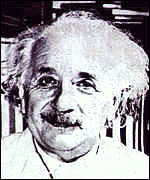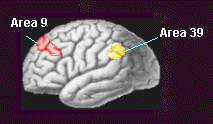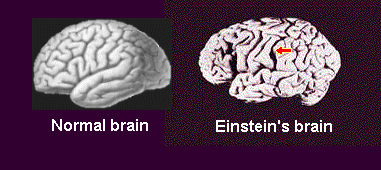

 Why Einstein Was a Genius?
Why Einstein Was a Genius?
By: Silvia Helena Cardoso, PhD
We always suspected that something physically extraordinary must have made Albert Einstein smarter than the rest of us. His contributions changed our conceptions of space, time, and the very nature of reality, and his ideas have left their mark on nearly every aspect of modern physics, from the subatomic to the cosmological.
Einstein even said himself that one of the keys to his intelligence was in his ability to visualize the problems he was working on and then translate those visual images into the abstract language of mathematics. In fact, one of the most famous examples is his special theory of relativity, which, as the story goes, he developed out of day dreams of what it would be like to ride through the universe ona beam of light.
When Einstein died in 1955 at the age of 76, his body was cremated. Before that, Dr. Thomas Harvey, a pathologist who performed the autopsy, took the brain home with him. Some parts of the brain were given to scientists to be used for scientific studies. The brain was not heard from again until 1978 when the reporter Stephen Levy tracked it down to Harvey's office in Kansas. According to Levy, Einstein's brain was being stored in Harvey's office inside two jars. Most of the brain, except for the cerebellum and parts of the cerebral cortex, had been sectioned (sliced). Dr. Harvey's preliminary examinations had found nothing unusual about the anatomical structure of Einstein's brain.
One of the scientists who got a part of Einstein's brain was Marian Diamond, a prominent Berkeley professor.
 She and her team counted the number of
neurons and glial cells in Einsteinís brain: area 9 and area 39 of the cerebral
cortex on the right and left hemisphere. Area 9 is located in the frontal lobe
(prefrontal cortex) and is thought to be important for planning behavior,
attention and memory. Area 39 is located in the parietal lobe and is part of the
"association cortex." Area 39 is thought to be involved with language and
several other complex functions. The ratios of neurons to glial cells in
Einsteinís brain were compared to those from the brains of 11 men who died at
the average age of 64.These scientists reported that Einstein's brain appeared
to have a higher percentage of glial cells, the cells that support and nourish
the network of neurons (1). The group concluded that the greater number of glial
cells 'oligodendroglia' -- helper cells that speed neural communication --
per neuron might indicate the neurons in Einsteinís brain had an increased
"metabolic need" - they needed and used more energy. In this way, perhaps
Einstein had better thinking abilities and conceptual skills. However, it is
important to note that the areas 9 and 39 make important connections with many
other areas of the brain and complex behavior is the result of many areas acting
together.
She and her team counted the number of
neurons and glial cells in Einsteinís brain: area 9 and area 39 of the cerebral
cortex on the right and left hemisphere. Area 9 is located in the frontal lobe
(prefrontal cortex) and is thought to be important for planning behavior,
attention and memory. Area 39 is located in the parietal lobe and is part of the
"association cortex." Area 39 is thought to be involved with language and
several other complex functions. The ratios of neurons to glial cells in
Einsteinís brain were compared to those from the brains of 11 men who died at
the average age of 64.These scientists reported that Einstein's brain appeared
to have a higher percentage of glial cells, the cells that support and nourish
the network of neurons (1). The group concluded that the greater number of glial
cells 'oligodendroglia' -- helper cells that speed neural communication --
per neuron might indicate the neurons in Einsteinís brain had an increased
"metabolic need" - they needed and used more energy. In this way, perhaps
Einstein had better thinking abilities and conceptual skills. However, it is
important to note that the areas 9 and 39 make important connections with many
other areas of the brain and complex behavior is the result of many areas acting
together.
The most recent finding on Einstein's brain was
published on June, 1999. Scientists have found that one part of his brain was
indeed physically extraordinary. A team of department of Psychiatry and
Behavioural Neurosciences, from the Faculty of Health Sciences at McMaster
University compared anatomical measurements of Einstein's brain with those of
brains of 35 men and 50 women who had normal intelligence. In general,
Einstein's brain was similar to the other brains except for one area called the
inferior parietal region. Because of extensive development of this region on
both sides of his brain, his brain was 15% wider than other brains studied.
"Visuospatial cognition, mathematical thought, and imagery of movement are
strongly dependent on this region," the researchers note. This unusual brain
anatomy may explain why Einstein tackled scientific problems the way he
did.
 Normal brain - contains a sulcus called the parietal operculum and the inferior parietal lobe; the latteris the seat of mathematical and visual reasoning Einstein brain - was no longer than most, but the parietal operculum region was missing. This allowed the inferior parietal lobe to grow 15% wider than normal |
In addition, Einstein's brain was unique
in that it did not have a groove, called a sulcus, that normally runs
through part of this area. The researchers speculate that the absence of
the groove may have allowed more neurons in this area to establish
connections between each other and work together more easily, possibly
creating an "extraordinarily large expanse of highly integrated cortex
within a functional network."The findings, the researchers conclude,
suggest that differences in people's ability to perform certain cognitive
functions may be due in some degree to physical differences in the
structure of the regions of their brains that mediate those
functions. Witelson theorized that the partial absence of the groove in Einstein's brain may be the key, because it might have allowed more neurons in this area to establish connections between one another and work together more easily. |
Not only was Einstein's inferior parietal region unusually bulky, but a feature called the Sylvian fissure was much smaller than average. Without this groove that normally slices through the tissue, the brain cells were packed close together, permitting more interconnections - which in principle can permit more cros-referencing of information and ideas, leading to great leaps of insight.
In conclusion, Although these results are interesting, it remains to be seen if every brilliant physicist and mathematician will have this same anatomy. Looking at the brains of living geniuses may be easier than it was with Einstein. In the past, a person's brain anatomy could be studied only after his or her death, but modern technology, such magnetic resonance imaging (MRI) and positron emissiontomography (PET), allows scientists to observe the brain at work within the living body. With this technology, it may prove quite possible to observe, not only differences in brain structure, but also the actual amount ofactivity taking place in those structures. For instance, if Einstein'sbrain had been studied with this technology, scientists could have observed the larger, unique parietal lobes and looked for activity in those areas as the physicist thought about his theories. Moreover, the study did not investigate how neurons in these brains were connected and of course, could not tell if there were differences in the way the neurons functioned.
References The
Author

Silvia Helena Cardoso, PhD.
Psychobiologist, master and doctor in Sciences,
Founder and
editor-in-chief,Brain and Mind Magazine, State University of
Campinas.